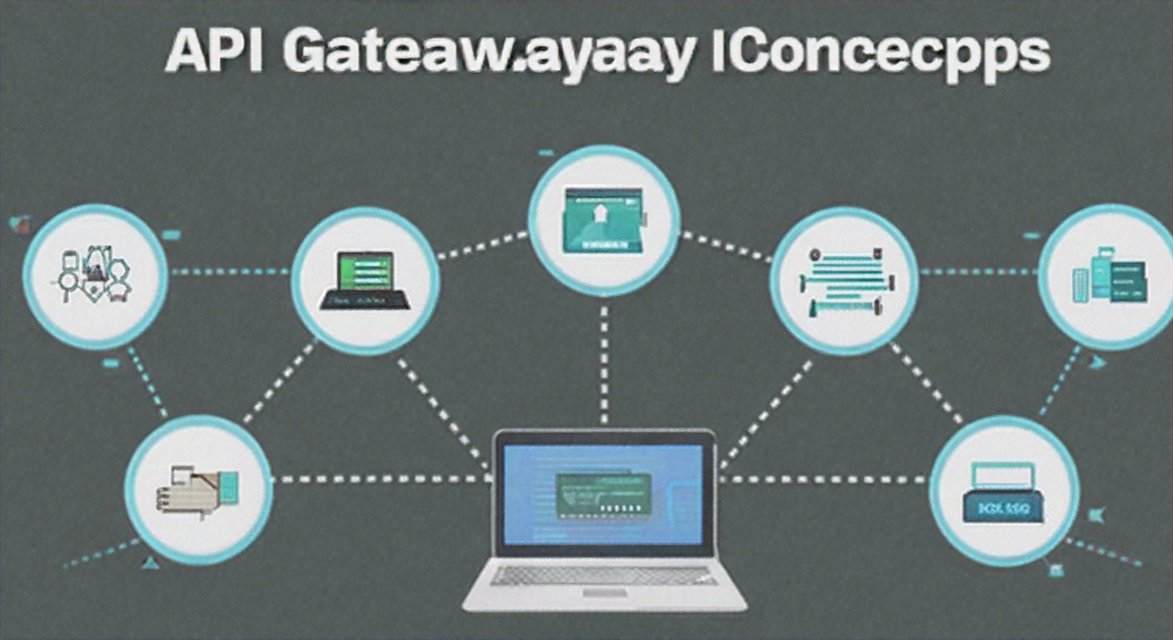Best Practices for Implementing API Gateway Main Concepts in Your Projects 🌐

In today's digital landscape, the use of APIs (Application Programming Interfaces) has become an integral part of modern software development. An API gateway serves as a single entry point for all API calls, acting as a facade that provides a single interface to the backend services. Implementing API gateway main concepts effectively can streamline your project, enhance security, and improve performance. In this article, we will delve into the best practices for implementing API gateway main concepts in your projects.
Understanding API Gateway Main Concepts 🧐
Before diving into the best practices, it's essential to understand the main concepts of an API gateway. An API gateway is a software that acts as a reverse proxy to protect and manage API traffic. It provides a centralized point for authentication, authorization, rate limiting, and other security measures. Here are some key concepts:
- Routing: The API gateway routes incoming requests to the appropriate backend service based on the request's URL, method, or other criteria.
- Security: The API gateway can enforce security policies, such as authentication, authorization, and rate limiting, to protect your backend services.
- Throttling: The API gateway can limit the number of requests a client can make within a certain time frame, preventing abuse and ensuring fair usage.
- Caching: The API gateway can cache responses to reduce the load on backend services and improve response times.
- Monitoring and Analytics: The API gateway can provide insights into API usage, helping you monitor performance and identify potential issues.
Best Practices for Implementing API Gateway Main Concepts 🌟
1. Choose the Right API Gateway Solution 🛠️
Selecting the right API gateway solution is crucial for a successful implementation. Consider factors such as ease of use, scalability, and support for your specific requirements. Some popular API gateway solutions include Amazon API Gateway, Apigee, and Kong.
2. Define Clear API Gateway Policies 📝
Establish clear policies for your API gateway, including authentication, authorization, rate limiting, and caching. This will ensure consistent and secure access to your backend services.
3. Implement Robust Authentication and Authorization 🛡️
Authentication and authorization are critical for protecting your API gateway and backend services. Use industry-standard protocols such as OAuth 2.0, OpenID Connect, and JWT (JSON Web Tokens) to secure your APIs.
4. Optimize Routing and Performance 🚀
Ensure that your API gateway routes requests efficiently and optimizes performance. Use caching to reduce the load on backend services and improve response times. Consider implementing load balancing to distribute traffic evenly across your services.
5. Monitor and Analyze API Usage 📊
Regularly monitor and analyze API usage to identify potential issues and optimize your API gateway. Use tools like Prometheus, Grafana, and ELK Stack to gain insights into API performance and usage patterns.
6. Implement Rate Limiting and Throttling 🚧
Rate limiting and throttling help prevent abuse and ensure fair usage of your APIs. Set appropriate limits based on your application's requirements and monitor them regularly to adjust as needed.
7. Use API Gateway for API Versioning and Documentation 📚
An API gateway can help manage API versioning and provide a centralized location for API documentation. This makes it easier for developers to understand and use your APIs.
8. Ensure Compliance with Security Best Practices 🔒
Follow security best practices, such as using HTTPS, securing API keys, and implementing proper logging and auditing. Regularly update your API gateway and backend services to address new vulnerabilities and threats.
Conclusion
Implementing API gateway main concepts effectively can greatly enhance the performance, security, and scalability of your projects. By following these best practices, you can ensure a successful API gateway implementation and provide a seamless experience for your users.
References
- "API Gateway: A Comprehensive Guide" - Apigee
- "API Gateway Best Practices" - Amazon API Gateway
- "Kong API Gateway Documentation" - Kong
- "OAuth 2.0 and OpenID Connect" - RFC 6749
- "JSON Web Tokens (JWT)" - RFC 7519

